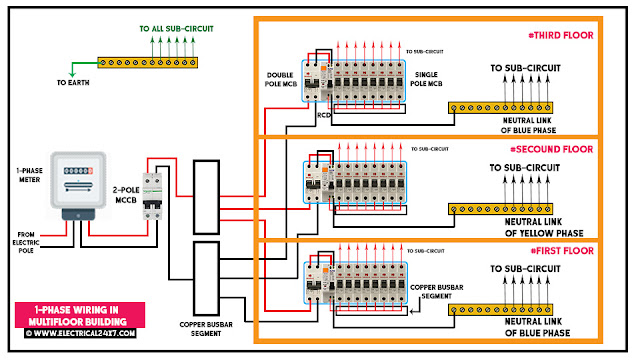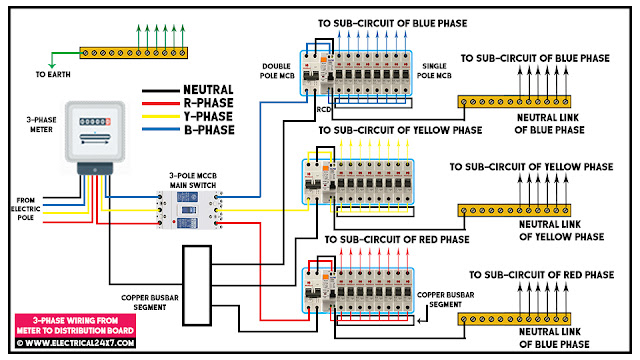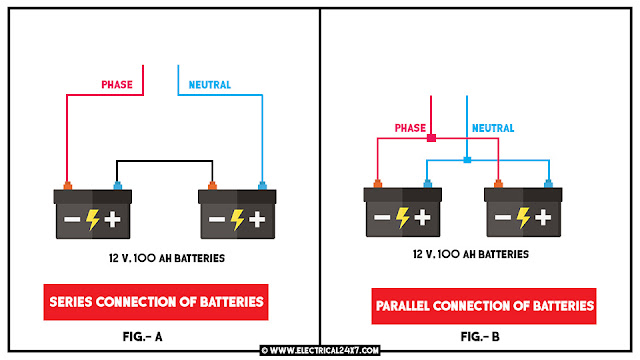Single phase wiring for multi-floor building

Requirements- Required Materials Number Single phase energy meter 1 Two pole, 100 A, MCCB 1 Double pole, 63 A, 30 mA, Trip current RCD 3 Double Pole MCBs, 63A 3 Single Pole, 20A, MCB 6 Single Pole, 16A, MCB 3 Single Pole, 10A, MCB 6 Distribution board cases 3 Cupper strips for MCB Common connection 3 As shown in figure, connect the single phase meter, MCCB as a main switch, DP, SP, RCD of each floor. Do not forgot to connect earthing as well as neutral to RCD. Use the circuit breaker with proper rating. In single phase wiring phase to neutral voltage is 230 V for India and for other countries it will be 120 V. Distribute the electrical wiring of each floor in three to four circuits because if a circuit breaker of a circuit trip due to fault then all loads will not dis-connect at same time. i.e. In a three floor building, yo


